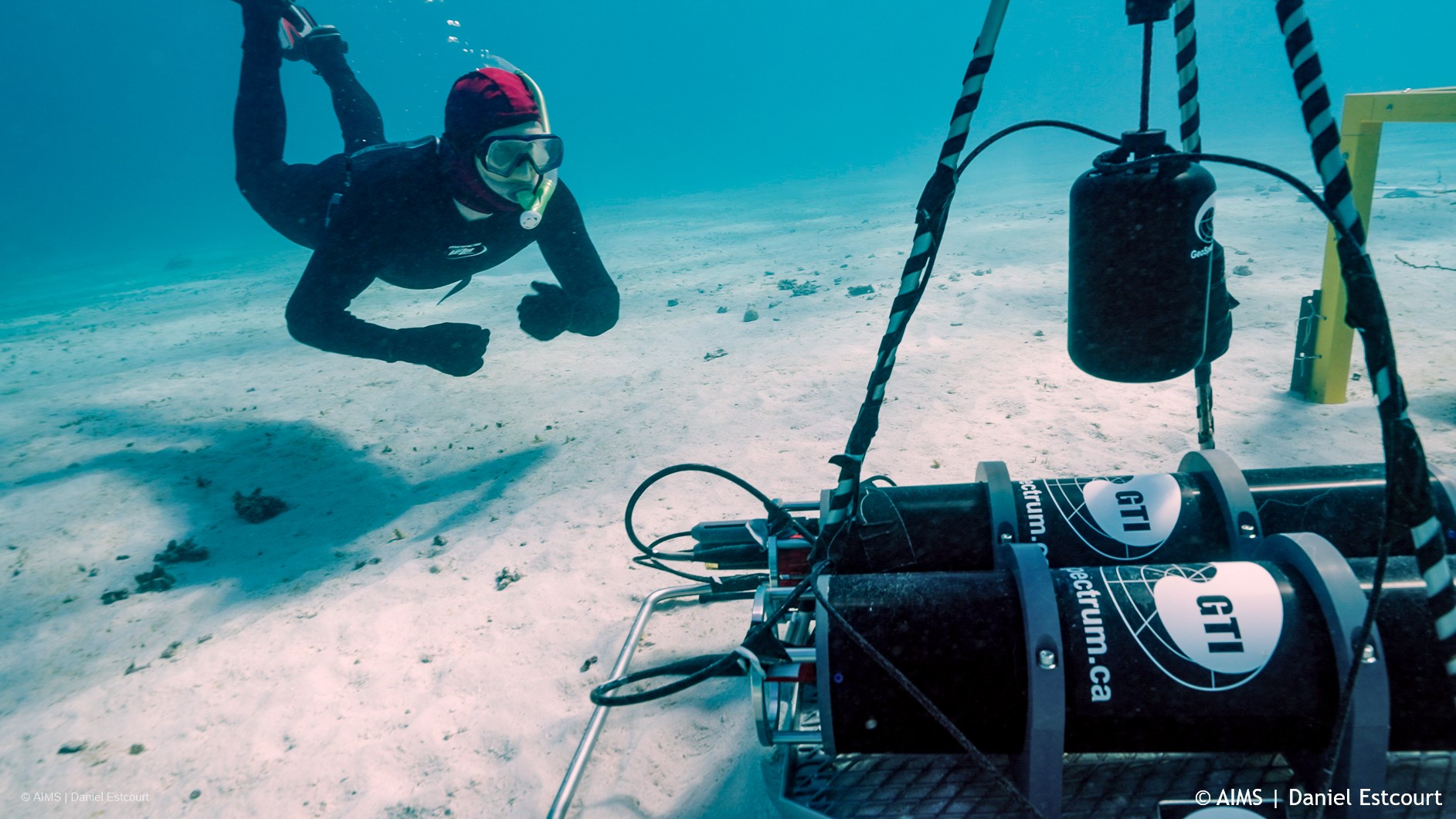R esearchers have long studied the creatures that inhabit our oceans, from vibrant coral reefs in Australia to the icy cold waters of the Arctic. The size of these organisms covers a wide spectrum: from micro-organisms too small to see with the human eye to extremely large mammals. In more recent years, scientists have increasingly studied the impacts of human activities affecting the underwater environment and how those activities impact the inhabitants of our oceans. The ocean is surprisingly loud when you have the right tools to listen, and sound is an important factor in determining the overall health of these complex soundscapes.
Ocean technology companies, like GeoSpectrum Technologies Inc. (GeoSpectrum), are key players in designing underwater acoustic equipment to aid in a variety of scientific experiments including the measurements of pressure and motion – two major components to underwater sound.

GeoSpectrum’s M20 Particle Motion system (Photo credit: GeoSpectrum Technologies Inc.)
Going hand-in-hand with underwater sound pressure and motion are the instruments used to detect and analyze it. There are two broad classes of hydrophones: those that respond to sound pressure, and those that respond to the differences in pressure. Although not as widely understood, hydrophones that respond to a difference in pressure play an important role in observing low-frequency sounds in complicated environments. and when you need to identify not only what the sound is, but where the sound is coming from. Further, while a difference in sound pressure may not impact a large organism in a dramatic way, the movement of the molecules that make up the underwater environment: water, salt, nutrients, etc, could have a huge impact on fish and invertebrates.
UNDERSTANDING PARTICLE MOTION SENSORS
Let’s take a trip down memory lane to 1985 when Dr. Bruce Armstrong, Founder and VP of Technology Advancement at GeoSpectrum, began designing vector hydrophones. Two generations of hydrophones were born from his dedicated research and understanding of acoustics; the second-gen is still in production as of 2023. Commercially sold as the ‘M20 Particle Motion Sensor’, Armstrong’s design has proven time and again to be quieter than its competitors which speaks volumes (no pun intended) considering this type of sensor is incredibly sensitive to mechanical inputs.
Particle motion sensors, or vector hydrophones, are specialized acoustic devices designed to sense and respond to the difference in pressure – not just the pressure itself. Like GeoSpectrum’s M20, accelerometer-based vector hydrophones also sense the particle motion created by a sound wave and can determine the bearing (direction) of the incoming sound. Vector hydrophones are designed to measure nanometers (a metric unit of length equal to one trillionth of a meter) Armstrong adds, “Acoustic pressures are typically small…but at low frequencies, the pressure differences can be 1,000 times smaller.” Designing vector hydrophones, and getting them right, is not for the faint of heart. In order to achieve accurate measurements, two of the three channels in the sensor need to behave identically over a wide frequency band. Regarding the number of things that need to be “just so” in this piece of equipment, Armstrong jokes, “It cannot be said that I didn’t warn you.”
So why bother with the hassle of designing, and then trying to figure out how to accurately use a vector hydrophone? Pressure waves create motion of water molecules themselves. Researchers believe this particle velocity influences marine life like fish and invertebrates more than pressure. The vast majority of research has been conducted on the effects sound pressure has on marine life, but all fish and most invertebrates use particle motion to gather information about their surroundings which would necessitate vector hydrophones to measure accurately.
THE MEANING BEHIND THE MOTION

In Coral Bay, Australia, researchers at The Australian Institute of Marine Science (AIMS) are using underwater acoustics to learn more about the attributes of healthy coral reefs, specifically their sounds, and what attracts larval fish to these areas.
Dr. Miles Parsons, a research scientist with AIMS, is recording both particle motion and pressure waves as part of the ‘Reef Song’ project. The project aims to capture the sounds of a healthy reef for the purpose of playing it back in areas where there has been a degradation.
Parsons explains, “Our study is concerned with coral reef fishes and invertebrates…we regularly use pressure to quantify the sound field in terms of monitoring, when we want to understand what the fishes and invertebrates are hearing, we need to measure particle motion.”
Among the list of field equipment used in this project is GeoSpectrum’s M20. By analyzing the particle motion data collected, scientists like Parsons can then assess potential disruptions that may be contributing to the decline of the coral reefs and in turn, causing the larval fish to find alternate breeding grounds.
Monitoring the underwater environment is vital in assessing marine ecosystems’ health and human activities’ impact. Studies like ‘Reef Song’ gives us a better understanding of the underwater soundscape and by using technological advancements and acoustic equipment, like the M20, we can aid in the preservation and future health of these vital underwater communities.


